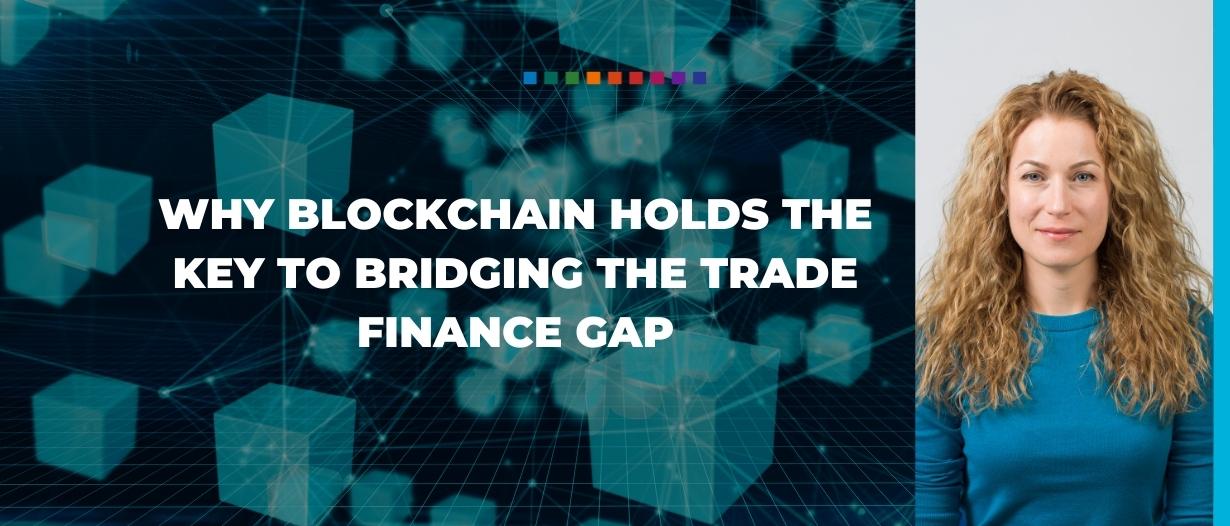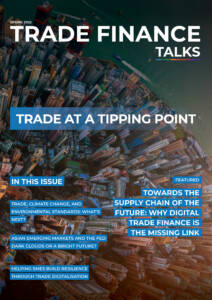The past two years has been a critical period for the trade finance industry, and one that has highlighted the need to transform the rhetoric of digitisation into real-world application.
With digital solutions now poised to transform this sector into a more streamlined and cost-effective industry, now is the time to harness maturing technologies to implement widespread and strategic change.
Enterprise blockchain is perhaps the most promising and appropriate technology to enable this journey.
Trade is inherently a decentralised system, and the decentralised nature of blockchain makes it a perfect fit for trade finance.
For the first time, the industry is getting behind this new technology and moving it into real-world deployment at record pace.
With the industry experiencing a period of reflect and reset like never before, how are participants benefitting from this change?
Digital value-add
Many of the processes and technologies underpinning trade finance have not been modernised in decades, from paper-heavy processing to juggling between multiple portals and documentation for each shipment.
These inefficiencies in trade finance mean that nearly $1.5 trillion of in-demand capital across the industry is rejected by banks, according to the Asian Development Bank (ADB).
According to ADB the current trade finance gap, or the amount of requested trade finance that is rejected, is estimated at $1.5 trillion globally, via @wef https://t.co/yLenP6CaZe
— ADB Europe (@ADB_Europe) February 16, 2020
Moreover, some 60% of banks expect this figure to rise over the next two years.
Developing markets that rely heavily on access to trade can be severely hindered through trade finance’s outdated processes.
By digitising these manual processes, such as invoice financing, and superseding ageing legacy systems, blockchain can have a real impact on reducing the costs, risks, and delays to participants involved in trade finance.
Creating an open, inclusive global network
Blockchain’s integration across the financial services ecosystem has delivered some encouraging results so far.
That said, there is growing debate about how blockchain can provide decentralised solutions for trade financing.
One such solution is real-time visibility, which is available via permissioned access to authorised network users, and gives buyers and sellers unprecedented transparency into the status of their transactions.
In addition, settlement finality removes the need for intermediaries to perform reconciliations. All of these applications could streamline the entire process.
Moving to mass adoption
For trade finance to truly capitalise upon the digital revolution, mass adoption on a global scale is essential.
This elusive network effect can only be achieved if technology players prioritise forward-thinking and inclusive integration solutions that lower the barriers to entry for all types of companies involved in the trading process.
If only a handful of firms adopt a blockchain solution for invoice financing, the benefits such as speed, efficiency, and lower costs mean nothing, as there won’t be enough counterparties to connect with.
BNP Paribas has pioneered digital innovation for many years.
— Marco Polo Network (@network_polo) November 25, 2021
With our #partnership, Marco Polo Network is leading the way in transforming the way trade is digitised in the banking sector utilising blockchain technology#blockchain #tradedigitisation #tradefinance pic.twitter.com/DTK7aQ1lHH
Marco Polo is a key example of a solution built for its market. The Marco Polo Network has developed a solution for post-shipment trade financing using the TiX platform.
Powered by the distributed platform from TradeIX and R3’s Corda blockchain technology, Marco Polo enables end-to-end, real-time, seamless connectivity between trade participants.
This eliminates the data silos, which prevent free flow of information, causing inefficiencies and discrepancies.
The adoption of digital solutions, however, will not happen in one big bang moment.
With many businesses yet to become fully digitally-native, the key to unlocking blockchain’s true potential lies within plugging this technology into existing infrastructure rather than overhauling legacy processes entirely.
Put simply, integration holds the single most important key to rewiring the $8 trillion global trade finance market and solving the $1.5 trillion shortfall.













































